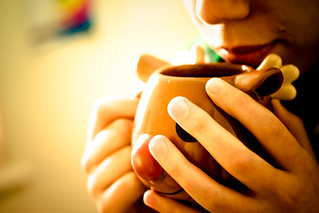| Daydreaming_Gentleman (Photo credit: mijori) |
We all daydream on occasion. Daydreams can be very similar in theme and content to night or sleep dreams. Essentially, daydreams are waking fantasies that may involve wishful thinking, curious ponderings, or even devious plotting. When we daydream we are typically mentally distant from our immediate surroundings, yet with a conscious awareness that usually allows us to function in a normal way. In fact, especially when involved in repetitious activity or activity that involves a drawn out state of concentration such as driving, for a major percentage of that time the mind may be engaged in thought activities that would fit in the category of daydreaming.
Wikipedia says:
Daydreaming is a short-term detachment from one's immediate surroundings, during which a person's contact with reality is blurred and partially substituted by a visionary fantasy, especially one of happy, pleasant thoughts, hopes or ambitions, imagined as coming to pass, and experienced while awake
A daydream is a distracted thought that has duration and a storyline of sorts--much in the same way as the dreams we have during sleep. A typical distracted thought is more commonly a brief diversion of attention that does not involve much more thought than the initial observation. If the distraction involves more extended thought that might include an imaginary encounter with that which has been observed or a story line then the thought thread is a daydream. If the daydream is recurring and consuming then one might be dealing with an obsession and that can be in most cases unhealthy from a psychological perspective.
Some of the benefits that can come as a result of daydreaming are creativity, problem solving, relieving boredom, and visualization of possibilities. Often daydreaming is associated with laziness or idle mind play, and while this may be at times the case, daydreaming can have productive and rejuvenating outcomes for the dreamer.
How are daydreams and sleep dreams related? They both come from within the mind and probably in the majority of situations they rise from the subconscious level. What we daydream will sometimes appear later in our sleep dreams either literally or figuratively. Our dreams can be influenced by what we see, do, hear, or think during our waking hours. This may be obvious to us in a remembered dream or we may not realize it. Our daydreams say a great deal about who we are and what we want in our lives. As long as we don't stay lost in excessive daydreaming, the daydream process is important for keeping our minds healthy.
When do you most commonly daydream? What is your favorite thing to daydream about? Have you ever found yourself daydreaming obsessively about someone or something?


























